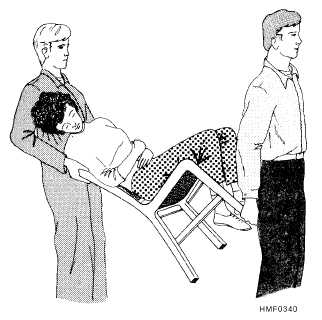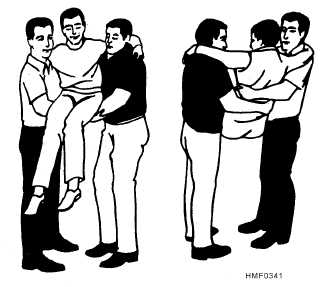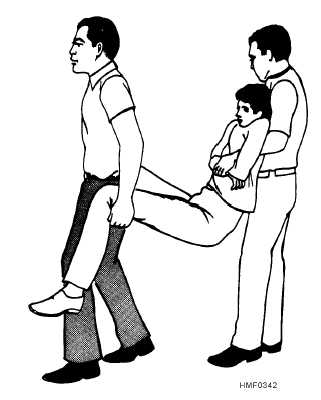TRANSPORTATION OF THE
INJURED
LEARNING OBJECTIVE: Recognize the
different forms of emergency transportation,
and identify essential BLS equipment and
supplies on Navy ambulances.
Thus far we have dealt with emergency methods
used to move an injured person out of danger and into a
position where first aid can be administered. As we
have seen, these emergency rescue procedures often
involve substantial risk to the casualty and should be
used only when clearly necessary.
Once you have rescued the casualty from the
immediate danger, SLOW DOWN! Casualties should
not be moved before the type and extent of injuries are
evaluated and the required emergency medical
treatment is given. (The exception to this occurs, of
course, when the situation dictates immediate
movement for safety purposes. For example, it may be
necessary to remove a casualty from a burning vehicle.
The situation dictates that the urgency of casualty
movement outweighs the need to administer
emergency medical treatment.)
From this point on, handle and transport the
casualty with every regard for the injuries that have
been sustained. In the excitement and confusion that
almost always accompany an accident, you are likely
to feel rushed, wanting to do everything rapidly. To a
certain extent, this is a reasonable feeling. Speed is
essential in treating many injuries and in getting the
casualty to a medical treatment facility. However, it is
not reasonable to let yourself feel so hurried that you
3-24
Figure 3–40.—Chair carry.
Figure 3–41.—Two-person arm carry.
Figure 3–42.—Two-person arm carry (alternate).






